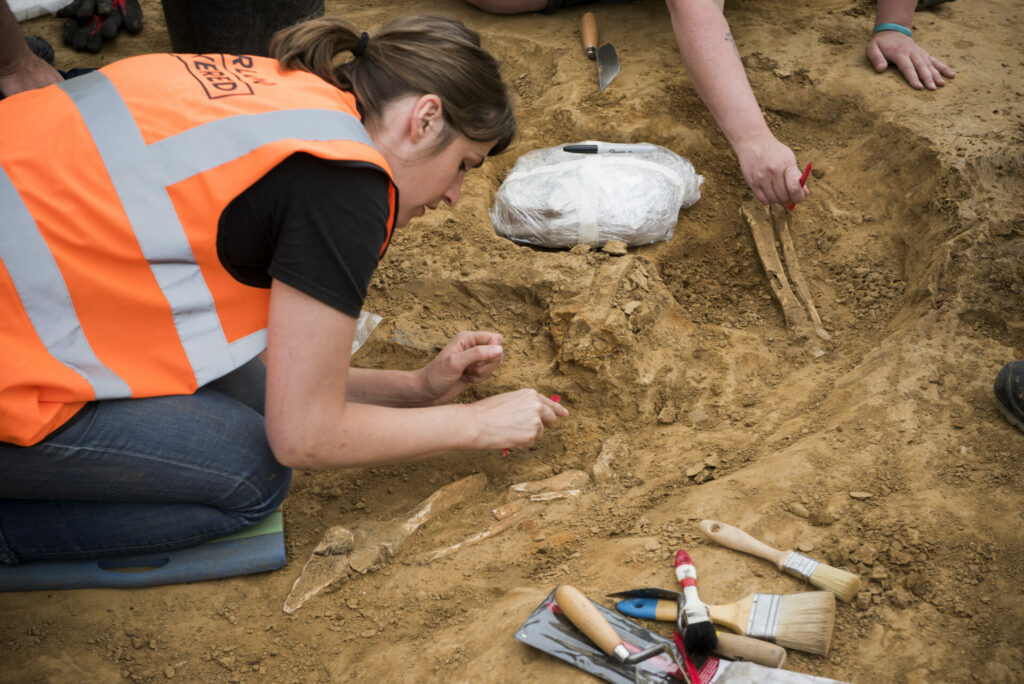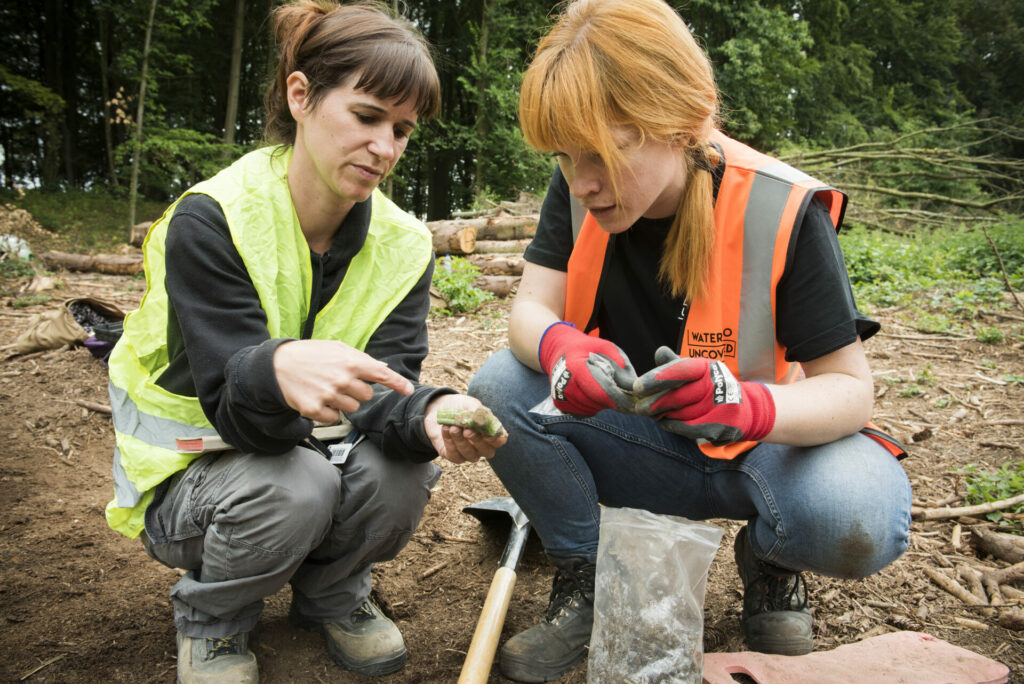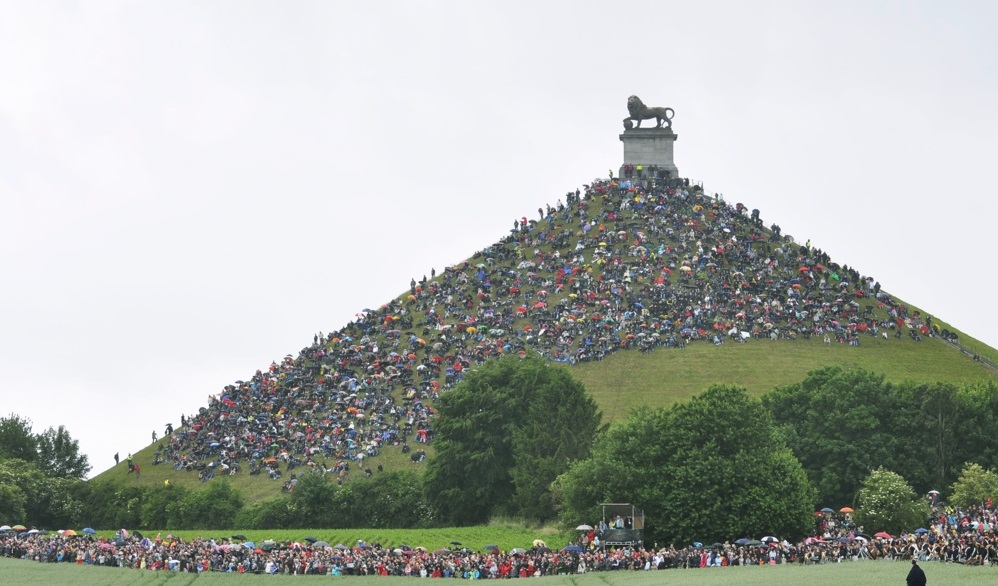Every year, thousands of visitors climb the 226 steps of the Lion's Mound overlooking the battlefield of Waterloo – unaware that it “very probably” contains human remains, according to leading Belgian archaeologist Dominique Bosquet.
Next week, Bosquet is returning to the battlefield with an international team of archaeologists, historians, military veterans and students to carry out the first major excavation on the site for three years.
The dig, which takes place from 2-16 July, is organised by Waterloo Uncovered, a charity helping veterans and serving military to recover from combat trauma.

Excavating bones at Mont-Saint-Jean. Credit: Waterloo Uncovered
The excavations will not focus on the Lion's Mound itself but other locations such as Mont-Saint-Jean farm, which was the main allied field hospital during the battle in which the Duke of Wellington defeated Napoleon on 18 June 1815. The remains of three amputated legs (one of which still had a musket ball lodged in it) were unearthed at the farm in summer 2019.
Bones beneath the surface
“There’s a good chance we will find more bones there,” reckons Brussels-based Bosquet, who discovered a complete skeleton of a British soldier, with a musket ball in the ribs, during an excavation in 2012 under what is now the Mémorial car park. The skeleton is on display in the Mémorial museum.
Does he expect to find another skeleton? “Somewhere on the battlefield, very probably. It’s a big area, 600 hectares in total,” he says, before the startling admission that “there are very probably also human remains, with a few cannon balls among them, in the Lion's Mound.”

Dominique Bosquet
Dutch King William I ordered the construction of the 45-metre mound to mark the spot where his son, the 22-year-old Prince of Orange, was wounded in the battle. It contains four million cubic feet of earth, dug from the surrounding area.
More than 10,000 men were killed during the battle. They were stripped of everything, including their teeth, destined to be sold as Waterloo dentures, before their bodies were dumped in mass burial pits or burnt on pyres. It is said that the bones were later exhumed and ground down to be sold as agricultural fertiliser.
Technical tools
While burial pits were depicted in drawings and paintings at the time, none have been found. Bosquet, from the Walloon Heritage Agency, hopes that geophysical surveys using cutting-edge technology could finally solve the mystery. Waterloo Uncovered has permission to excavate in the village of Plancenoit for the first time and Bosquet is eagerly awaiting the survey findings which will help determine where to search.
Three other Belgian archaeologists – Véronique Moulaert, Camille Machiels and Eva Collignon – will also take part in the dig. Joining them are 20 veterans and serving military personnel: eleven from the UK, five from the Netherlands, three from Germany and, for the first time, a veteran from Belgium, Stef ‘Wolf’ Wolput.

Veronique (left) and Hilde (right) of Waterloo Uncovered. Credit: Waterloo Uncovered
A former flight operations officer in the Belgian Air Force who retired recently after 37 years of service, Wolf suffers from paralysis in his right lower leg and limited movement in his left hand.
Related News
In April, he won a silver medal in the 1,500 metres and a bronze medal in the 200 metres and the 4x100 metre relay at the 2022 Invictus Games in the Hague. Prince Harry presented Wolf and his wife Katrien de Pillecyn with the Landrover Above and Beyond Award at the closing ceremony, in recognition of their commitment to the values and spirit of the Games.
Wolf, 55, who lives in Kampenhout, is also well known for his mountaineering exploits. In 2017 he conquered Lhotse in the Himalyas, the fourth highest mountain in the world, the first climber with a disability to reach the 8,516-metre summit.
“I can’t wait to join the dig,” he says. “The Battle of Waterloo is part of Belgian and European history. One of my ancestors fought there. My middle daughter is studying archeology in Ghent and encouraged me to sign up. After retiring, I’m looking for new challenges, to meet new people and not fall into a black hole!”

